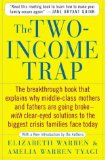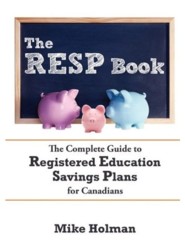 The “Two Income Trap” is a financial theory put forth by authors Elizabeth Warren and Amelia Warren Tyagi which proposes that middle class working couples with kids are more likely to stretch their budget to buy expensive houses in good school areas than couples without kids. Because both parents are working, there is no backup plan if there is some type of financial emergency so if one person loses their job then the family’s financial security is put at risk which can end up in bankruptcy.
The “Two Income Trap” is a financial theory put forth by authors Elizabeth Warren and Amelia Warren Tyagi which proposes that middle class working couples with kids are more likely to stretch their budget to buy expensive houses in good school areas than couples without kids. Because both parents are working, there is no backup plan if there is some type of financial emergency so if one person loses their job then the family’s financial security is put at risk which can end up in bankruptcy.
This book is a well written, extensively researched look at current generation middle class Americans and the reasons why they are not doing as well financially as the previous generation. It debunks the commonly held perception that over-consumption on consumer items and frivolous expenses is the reason why middle class families have increasing debt loads and higher bankruptcy rates than the previous generation. Instead it shows using extensive research that spending on normal consumer items hasn’t changed very much from the previous generation and in fact the main spending difference is on real estate.
Why are they doing this? One reason is that parents want the best for their kids and are willing to spend more money to buy houses in better school areas. The other reason is because they can. Compared to the previous generation a lot more mothers are in the workforce which increases the amount of money a couple can spend on a house. Combined with lower interest rates and the easier credit available to the current generation and you have a recipe for skyrocketing interest rates.
To order this book:
From the United States then please use this link for Amazon.com
If you are from Canada then please use this link for Amazon.ca
The problems occur if a major event happens to the family – divorce, unemployment, medical crisis are all events that in some cases can lead to bankruptcy because the families typically can’t cope with the loss of one income.
Solutions
- The authors suggest that allowing students to go to school wherever they want will reduce the pressure on the parents to live in an expensive area. A voucher system would allow the parents to decide what school would get their funding and could possibly even allow the parents a say in running the school.
- Reduce available credit by regulating the lending industry so that families can’t qualify for loans with high interest rates they can barely afford with no down payment.
Interesting Points
- One comparison I found quite interesting was between a hypothetical family with two incomes who maxed out their credit to buy an expensive house and a second family that can live on one income for the essentials but blows the second income on vacations, big screen tvs etc. In the case where both families suffered a loss of one income, the first family would be hardest hit because they wouldn’t be able to cut back enough on the non-essentials since they have committed so much of their budget to fixed costs like housing. The second family who wastes their second income ironically could handle losing the second income because that money is not committed to anything such as a mortgage. All they have to do is stop going on expensive vacations and buying big screen televisions and they will be fine.
- Subprime mortgages – even though the book was published in 2003 the section on subprime mortgages could have been written this year. They mention how in 2002 Citibank’s subprime lending subsidiary was prosecuted for deceptive marketing practices and fined $240 million.
What I didn’t like
This book is a bit of a downer because it focuses a lot of the research on families that went bankrupt. It tends to really accentuate the negative to the point of absurdity. There was one example that I found a bit ridiculous – “Gayle” who had three kids and was divorced had fallen into the two income trap when still married and bought an expensive house that required two salaries. Once the divorce occurred (after Dad got laid off) there wasn’t enough money for her to keep the house but in her mind it was the most important thing for her kids to stay in the same house even though they were clearly on the path to bankruptcy. I agree with the authors that she was part of the two income trap when the house was bought, but hanging on to something she had no hope of affording is what I call the stupid trap. Sometimes you have to look at reality and make the choices that are best for you and your family no matter how hard they are.
Another negative which was not a major problem but a bit annoying was the authors’ use of statistics. One issue is that they almost always used comparative percentages to make things look as bad as possible and never put the numbers in context. For example they would say something like “The number of single mothers declaring bankruptcy went up 600% from 1994 to 2002” which is fine but how about letting us know the percent of bankrupt single mothers as a percent of all single mothers? Another trick they did was to extrapolate data – using the previous example they would finish off by saying “If this trend continues then by the end of the decade, one out of every ten single mothers will be bankrupt”. Looking at a trend from 1994 to 2002 (how did they come up with that time period?) and then extrapolating to 2010 is not good math.
Conclusion
Quibbles about depression inducing statistics aside, I really enjoyed this book because I thought it made a great case toward its central thesis and disproved the idea that today’s average middle class family is increasing debt because of televisions. There are a lot of thought provoking ideas in the book which made it a very interesting read.
If learning about why seemingly well off families get into financial trouble is interesting to you then I would recommend this book.
To order this book:
From the United States then please use this link for Amazon.com
If you are from Canada then please use this link for Amazon.ca

